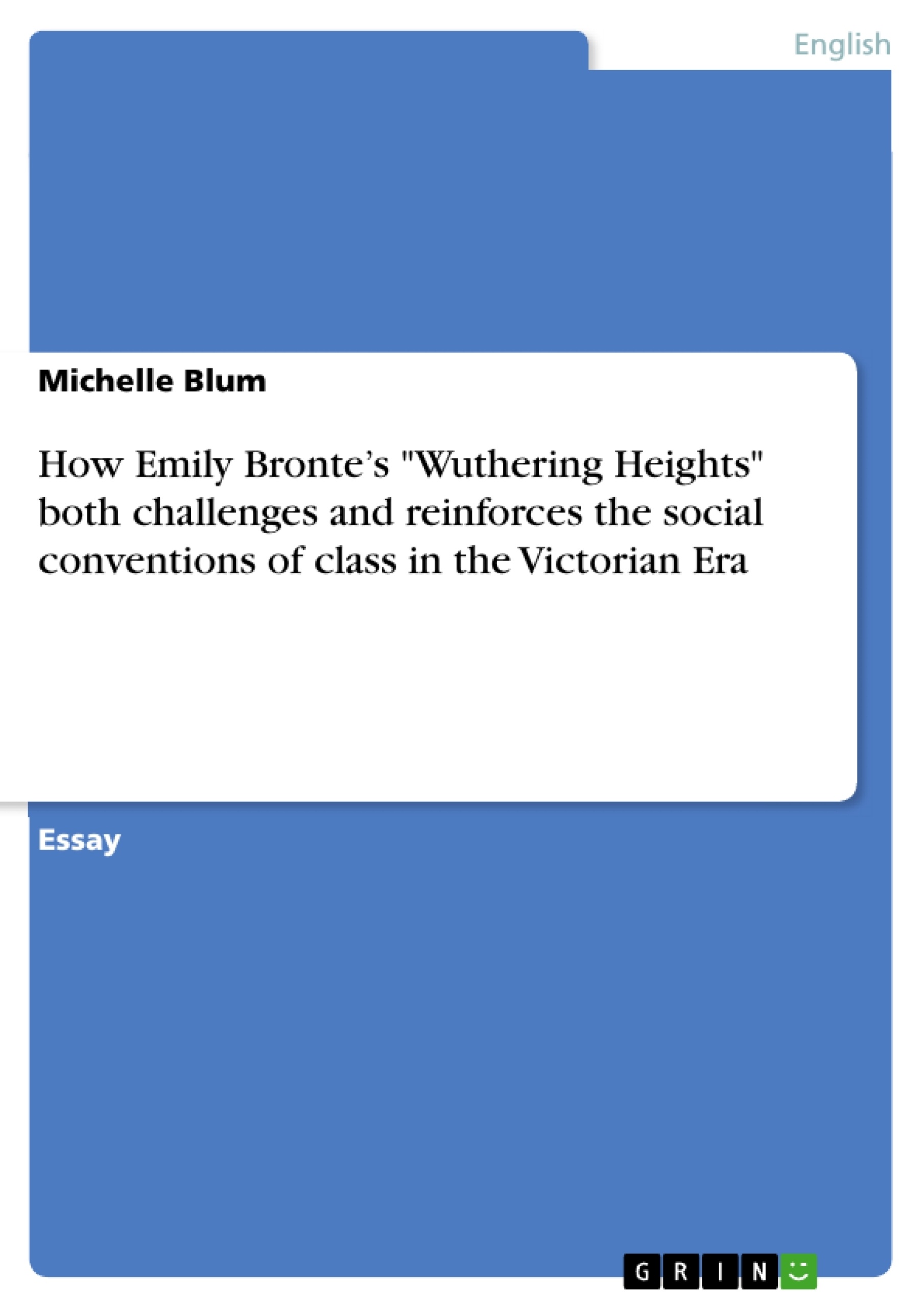In this essay, it will be discussed to what extent Emily Bronte’s "Wuthering Heights" both challenges and reinforces the social conventions of class in the Victorian Era. For this purpose, the characters of Heathcliff, Catherine, and Nelly will be looked at in detail, and others will be briefly mentioned. Furthermore, the opinions of several critics will be taken into consideration.
The Victorian Era, which lasted from 1837 to 1901, was a period of change. While the lower class was still restricted in their choices of work and education, the middle class grew more powerful. The idea of the “self-made man”, a person climbing the social ladder through hard work rather than hereditary titles meant that the landowning people of the upper class, who did not work, lost a lot of prestige and respect. However, it should be noted that social mobility was restricted to the middle class.
Inhaltsverzeichnis (Table of Contents)
- Introduction
- The Victorian Era
- Class in Wuthering Heights
- Heathcliff and his social status
- Nelly Dean and her role as a servant
- Joseph and his ambiguous position
- Critical Perspectives on Class
- Catherine's choices
- The absence of working-class representation
- Heathcliff's social mobility
- Conclusion
Zielsetzung und Themenschwerpunkte (Objectives and Key Themes)
This essay examines the extent to which Emily Brontë's novel "Wuthering Heights" challenges and reinforces the social conventions of class during the Victorian era. It focuses specifically on the characters of Heathcliff, Catherine, and Nelly, and their interactions within the complex social dynamics of the novel.
- The impact of social class on individual lives and relationships
- The limitations and possibilities of social mobility in Victorian society
- The role of servants and their influence on the lives of their masters
- The tension between personal desires and societal expectations
- The influence of social class on identity and perception
Zusammenfassung der Kapitel (Chapter Summaries)
The first chapter provides an introduction to the novel's setting and the characters of Heathcliff, Catherine, and Nelly. It establishes the social dynamics of the Earnshaw family and their relationship with the lower class, as represented by the arrival of the young Heathcliff.
Chapter two explores the Victorian Era and its social structures, highlighting the changing roles of the middle class and the limited opportunities for women. This context is used to analyze the social interactions between the characters in "Wuthering Heights," particularly those concerning Catherine's marriage.
The following chapters examine the challenges to class conventions presented in the novel. They explore Heathcliff's journey from a lower-class orphan to a wealthy gentleman, Nelly's complex relationship with her masters, and Joseph's ambiguous position as a servant who often defies his role.
The final chapter provides an in-depth analysis of critical perspectives on class in "Wuthering Heights." It examines interpretations of Catherine's marriage choices, the representation of working-class characters, and Heathcliff's social mobility.
Schlüsselwörter (Keywords)
This essay delves into the themes of social class, Victorian society, social mobility, servant-master relationships, personal desires, and societal expectations. It analyzes the characters of Heathcliff, Catherine, and Nelly, and their interactions within the complex social dynamics of "Wuthering Heights."
- Quote paper
- Michelle Blum (Author), 2016, How Emily Bronte’s "Wuthering Heights" both challenges and reinforces the social conventions of class in the Victorian Era, Munich, GRIN Verlag, https://www.grin.com/document/1128294




